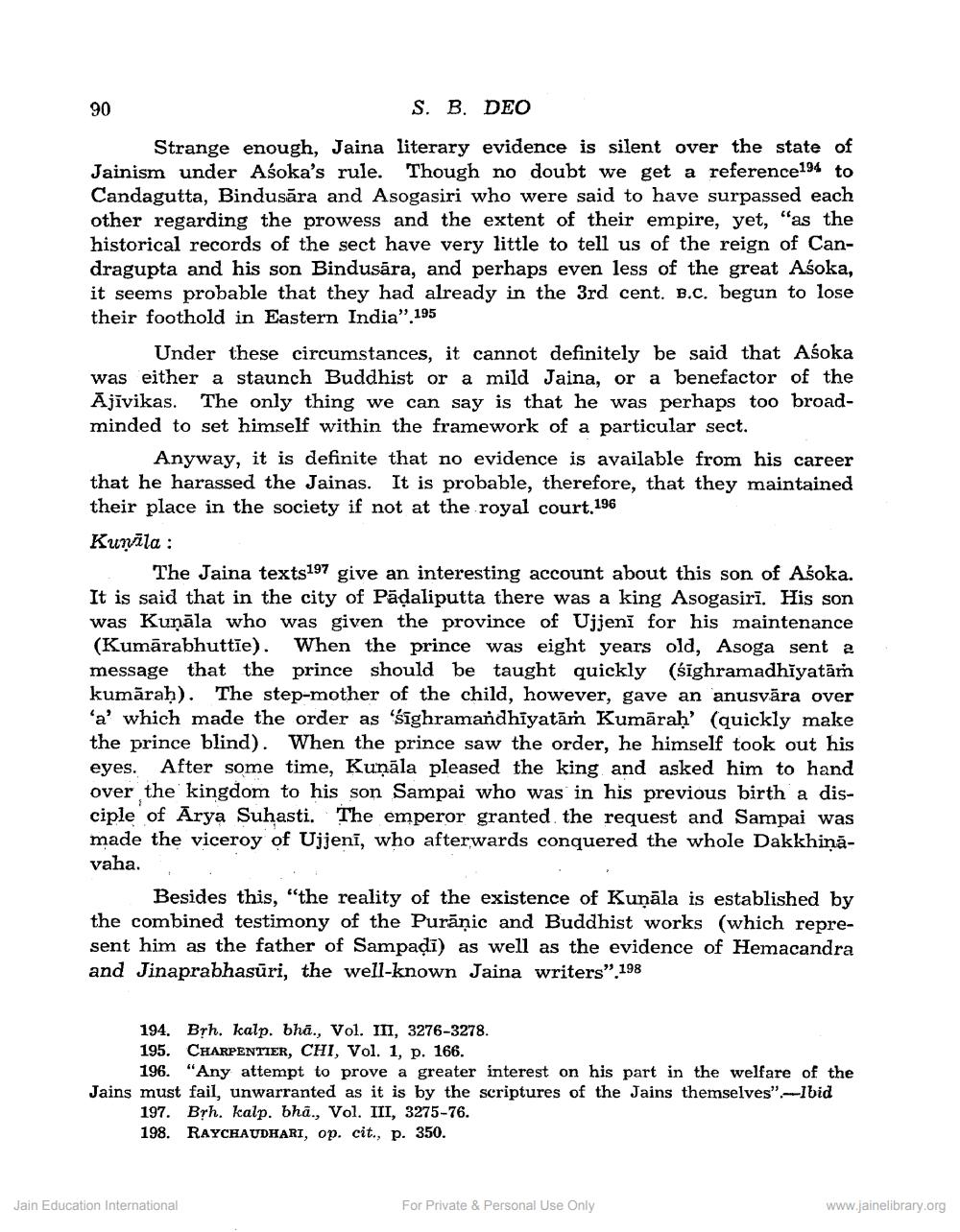________________
90
S. B. DEO Strange enough, Jaina literary evidence is silent over the state of Jainism under Asoka's rule. Though no doubt we get a reference194 to Candagutta, Bindusāra and Asogasiri who were said to have surpassed each other regarding the prowess and the extent of their empire, yet, "as the historical records of the sect have very little to tell us of the reign of Candragupta and his son Bindusāra, and perhaps even less of the great Asoka, it seems probable that they had already in the 3rd cent. B.C. begun to lose their foothold in Eastern India". 195
Under these circumstances, it cannot definitely be said that Aśoka was either a staunch Buddhist or a mild Jaina, or a benefactor of the Ājīvikas. The only thing we can say is that he was perhaps too broadminded to set himself within the framework of a particular sect.
Anyway, it is definite that no evidence is available from his career that he harassed the Jainas. It is probable, therefore, that they maintained their place in the society if not at the royal court.196 Kunāla :
The Jaina texts197 give an interesting account about this son of Asoka. It is said that in the city of Pādaliputta there was a king Asogasirī. His son was Kuņāla who was given the province of Ujjenī for his maintenance (Kumārabhuttīe). When the prince was eight years old, Asoga sent a message that the prince should be taught quickly (śīghramadhiyatām kumārah). The step-mother of the child, however, gave an anusvāra over 'a' which made the order as 'sīghramandhiyatām Kumāraḥ' (quickly make the prince blind). When the prince saw the order, he himself took out his eyes. After some time, Kuņāla pleased the king and asked him to hand over the kingdom to his son Sampai who was in his previous birth a disciple of Arya Suhasti. The emperor granted the request and Sampai was made the viceroy of Ujjenī, who afterwards conquered the whole Dakkhinavaha.
Besides this, "the reality of the existence of Kuņāla is established by the combined testimony of the Purāņic and Buddhist works (which represent him as the father of Sampaļī) as well as the evidence of Hemacandra and Jinaprabhasūri, the well-known Jaina writers" 198
194. Brh. kalp. bhā., Vol. III, 3276-3278. 195. CHARPENTIER, CHI, Vol. 1, p. 166.
196. "Any attempt to prove a greater interest on his part in the welfare of the Jains must fail, unwarranted as it is by the scriptures of the Jains themselves".--Ibid
197. Brh. kalp. bha., Vol. III, 3275-76. 198. RAYCHAUDHARI, op. cit., p. 350.
Jain Education International
For Private & Personal Use Only
www.jainelibrary.org




